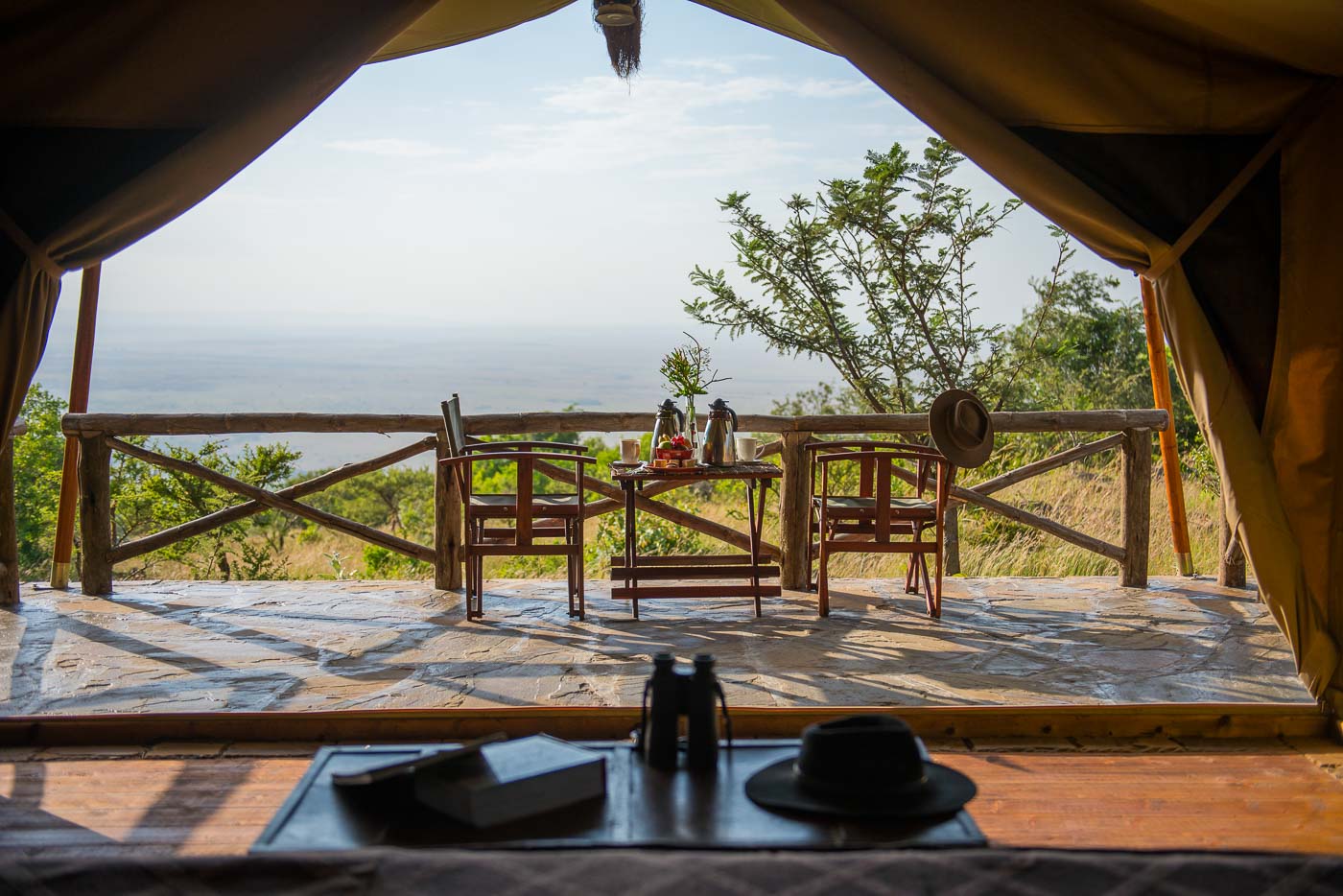As our tiny plane dipped beneath the clouds and we caught our first glimpse of the arid plains stretched out below, a collective hush fell over the cabin. Before the plane’s wheels had even touched down on the dirt runway in Samburu, Kenya, we could see our guide Chris, dressed in a cerulean shuka and smiling broadly. Joining Chris in the Land Rover, we headed off to Saruni Samburu, a six-villa lodge atop a rocky hill in the Kalama Community Wildlife Conservancy.
The drive from the airstrip to Saruni Samburu doubles as a game drive. Bumping along the craggy road, we ogled giraffes grazing, impala and gerenuk striding across the plains, and sparrow-weavers sitting high above the action. Chris expertly guided the Land Rover up the steep, rocky pass to the resort and delivered us just in time for lunch with the young camp manager James. Saruni’s owners are Italian and its local chef quite skilled at producing classic Italian dishes. Over two days, we happily tucked into fettuccine with zucchini and capers, risotto, and focaccia, with sides like tender roasted vegetables or a fresh avocado and tomato salad. On our first toasty afternoon, we were delighted to see staffers Kennedy and Peter emerge from the pantry bearing house-made coffee ice cream with biscotti.

Of Saruni Samburu’s six villas, four can accommodate families. The whole lodge runs in a zigzag astride a hilltop, with one villa on the descent, just down the path from the main lodge, and the rest, along with the gift shop, on the ascent. There are two pools, one on a path running down from the main lodge and one at the very top of the resort. No matter where we were on the property—whether lying in bed, soaking in the tub, or enjoying the outdoor shower—we were awed by the breathtaking views of Kalama Conservancy and Mount Kenya. All of the villas have private verandahs, ideal for sunset drinks à deux.

Saruni Samburu is the only lodge in the Kalama Conservancy, which covers more than 200,000 acres. Its list of activities reads like a summer camp brochure: bird watching, bush walking, trekking up sacred Mount Ololokwe, visiting ancient caves, bush breakfasts and, as an antidote to all that, swimming. Day-time game drives take place in Kalama Conservancy and neighboring Buffalo Springs National Park and Samburu National Park; on our second day, we were thrilled to park a stone’s throw from a herd of some two dozen elephants, watching as they cooled off in the Ewaso Niro River. Following a sundowner, Saruni runs night game drives, which are allowed only in the conservancy.
We were eager to see a school and the lodge seamlessly arranged for us to go by Kiltimany Primary School on our way to visit the village of the same name. Meeting the 200-odd students here was a wonderful experience. We kicked around the soccer balls we’d brought, played games, told jokes, and generally had a blast. Towards the end of our visit, two of the classes sang for us, which was quite touching. Saruni Samburu partners with Pack for a Purpose, so guests wishing to bring donations know exactly what’s needed and that it’ll go right to the school.

Saruni’s most unique activity is its Warriors Academy, which can run from one day to one week. Here, guests get an lesson on the history of the Samburu people, meet and shadow real Maasai and Samburu warriors, and learn from them myriad skills. These include tracking wildlife, shooting bows and arrows, throwing spears, building a fire and a bush camp, and tending to cattle and goats. Anyone with nimble fingers can try their hand at making the vibrant beaded collars the Samburu wear. For inspiration, visit to the lodge’s gift shop, where proceeds from many of the lovely pieces go back to the local community.







